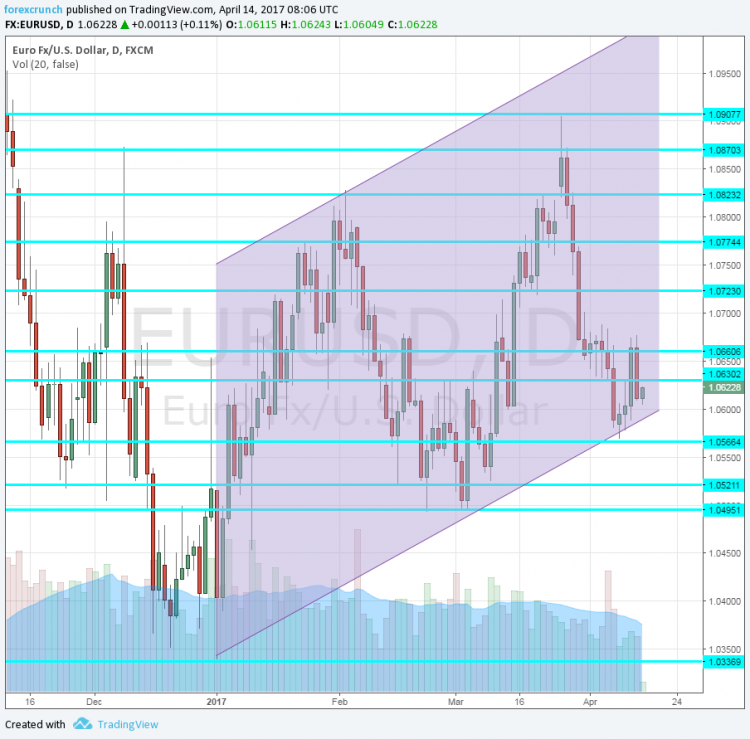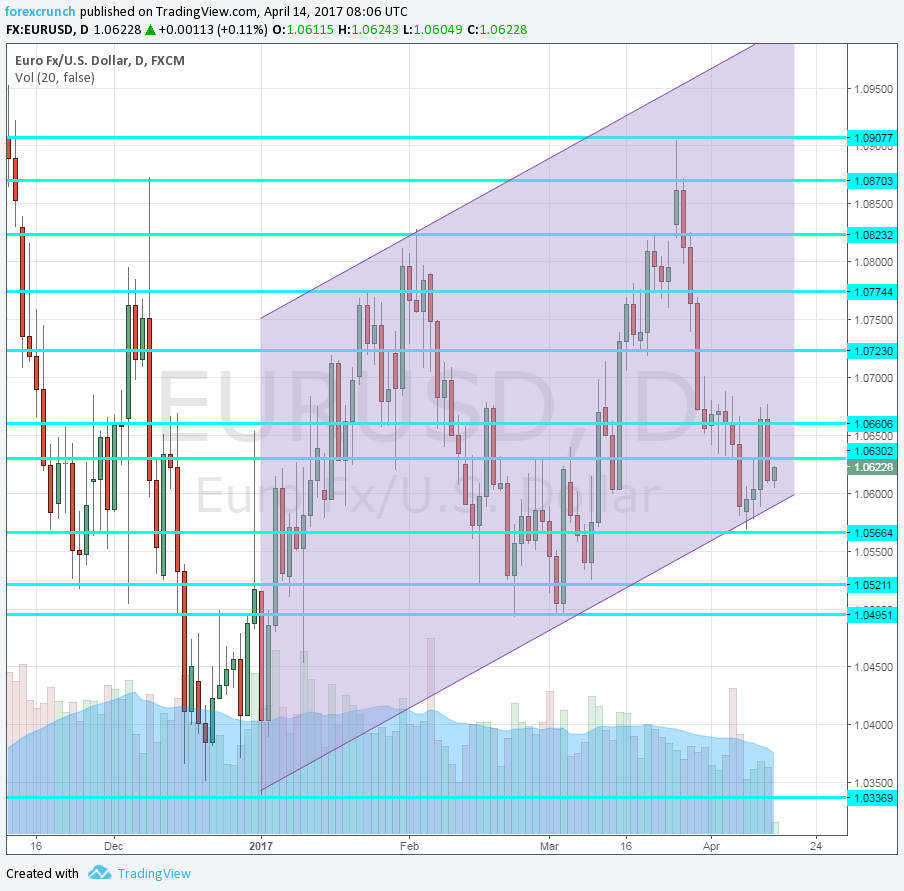
EUR/USD managed to rebound from the lows ahead of Easter, getting back to the range. Will it stay there? Inflation figures and PMIs stand out ahead of the French elections. Here is an outlook for the highlights of this week and an updated technical analysis for EUR/USD.
Tension is rising towards the French elections, with the emergence of radical-left candidate Melenchon worrying many investors. Data has been mixed in the euro-zone: the German ZEW indicator beat expectations with 19.5 points and so did the Sentix Investor confidence with 23.9. Higher confidence was met with a disappointing drop in the industrial output by 0.3%. In the US, Trump trumped the dollar by saying it is too strong and that he likes low rates. In addition, Yellen’s future could be brighter under the President. He is no longer certain that she will be replaced.
Updates
EUR/USD daily chart with support and resistance lines on it. Click to enlarge:

CPI (final): Wednesday, 9:00. Inflation is cooling down. According to the initial data for March, prices have risen by 1.5% y/y against 2% in February. Also, core inflation provided a setback: 0.7%, the lowest level since April last year. The numbers will probably be confirmed.
Trade Balance: Wednesday, 9:00. The euro-zone enjoys a trade surplus thanks to German exports. However, this surplus squeezed in January to 15.7 billion, the lowest since late 2014. A higher surplus is likely now.
German PPI: Thursday, 6:00. Producer prices make it into consumer prices, so this figure is watched. A monthly rise of 0.2% was recorded in February, below expectations.
Flash PMIs: Friday morning: 7:00 for France, 7:30 for Germany and 8:00 for the whole euro-zone. According to Markit’s final numbers for March, France’s manufacturing PMI stood at 53.3 points, reflecting OK growth. The services sector was doing much better with 57.5. In Germany, manufacturing came out on top with 58.3. Services lagged behind with 55.6. For the whole euro-zone, manufacturing was at 56.2 and services at 56.
Current Account: Friday, 8:00. Similar to the trade balance, the euro-zone enjoys a current account surplus. And also here, it narrowed in January and stood at 24.1 billion after 30.8 beforehand.

















